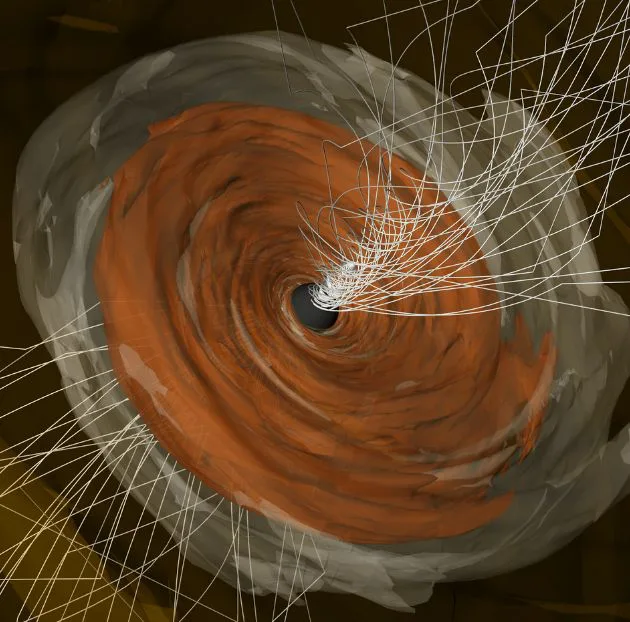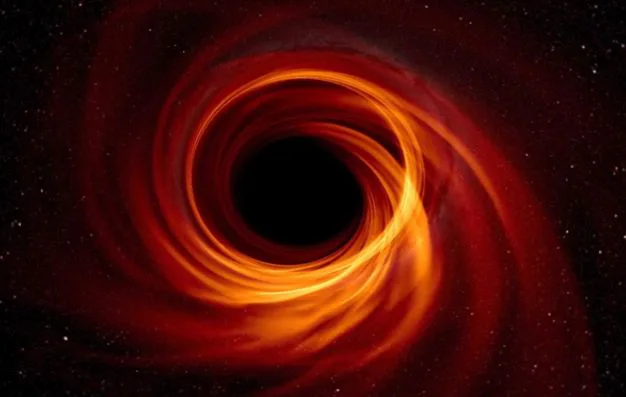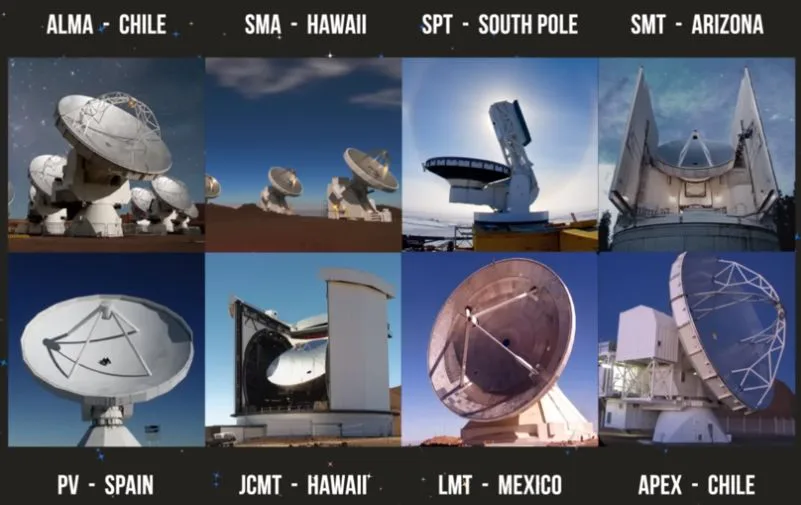
In 2019, the Event Horizon Telescope (EHT) unveiled the first-ever images of M87. It was a mind-blowing moment for astronomy.
M87 is a supermassive black hole at the center of the galaxy Messier 87. The EHT dropped the first snapshots of M87. It was like getting an up-close look at a supermassive black hole for the first time ever!
The Event Horizon Telescope (EHT)
The EHT is this worldwide squad of radio telescopes that is teamed up to build a virtual telescope as big as Earth. Only to capture millimeter and submillimeter wavelength ranges.
Each telescope collects the data (radio waves) and then all the data are put together to create an image of event horizon.
Interestingly, all these dishes need to work harmoniously together, just like the perfect alignment needed for a crystal-clear holograph. In case any one of the dishes wobble or otherwise then the light ray reflected will not combine at the focus. Hence, we might get a distorted image.
Circular Polarization of Light from the Black Hole
First images, in 2019, from the EHT show the twirling disk of gas and dust that fuels the M87. Later, in 2021, scientists observed ‘linear polarization’ of light coming from the black hole. With this, they concluded the direction and strength of electric field oscillations. By measuring this, astronomers confirmed the strong and organized magnetic fields around M87.
The EHT recently dropped their newest findings – Detection of Near-horizon Circular Polarization- in The Astrophysical Journal.
According to Avery Broderick from the EHT team, circular polarization is like the laid-back sibling of linear polarization. Instead of doing the regular back-and-forth routine, the electric field just swirls in a casual twist.

Broderick further explains that the spiraling light serves a crucial purpose. It provides information about the magnetic field’s structure and the particles causing those radio emissions.
Andrew Chael, the brain behind the project at Princeton, added that circular polarization was the last signal they sought in the EHT’s initial observations. With this, the recent findings provide assurance that their understanding of a robust magnetic field surrounding the black hole is accurate.
Researchers envision that with the current info, they are on the right track of peeling the layers on how black holes chow down on matter and spew off cosmic jets.
Gauging the Circular Polarization Signal
Getting these results was a real challenge. The signal of circular polarization was extremely faint due to the noisy emissions swirling around the black hole.
A groundbreaking technique, developed at Waterloo, played a key role by offering robust assessments of the credibility and reliability of each measurement.
Clocking it at less than 3.7% of the total light in the image, the EHT team did manage to capture some fragments.
So, how was it achieved?
Credit goes to the cool minds at Waterloo, as they came up with a game-changer. The technique offered solid checks on the credibility and reliability of every measurement.
Now, let’s talk about this unique imaging method. It not only brings an image back to life but also takes a good guess at the probability of different features in that image.
Without this innovative approach, the team wouldn’t have been gauging that “upper limit”.
The “upper limit” here refers to the circular polarization that was clocked at less than 3.7% of the total light in the image. Or in simple words, it signifies the maximum extent to which the circular polarization signal is present in the observed data.

Takeaway
The possibilities seem unlimited with the current research on M87 supermassive black hole and its circular polarization vibes. For instance, we might get sharper images of the event horizon. We can get better coverage by tweaking the array of Event Horizon Telescope’s settings.
It’s not just radio waves we are talking about but, future astronomical tech might involve blending radio, optical, and X-ray observations, to see and understand the cosmic landscape.
Additionally, we could be witnessing the similar phenomena with other supermassive black holes from different galaxies.
In a nut shell, we would be witnessing these celestial powerhouses not just with some sci-fi telescope, but with the real deal.
Source: Perimeter Institute



